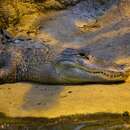Morphology
provided by Animal Diversity Web
Other Physical Features: ectothermic ; bilateral symmetry
- license
- cc-by-nc-sa-3.0
- copyright
- The Regents of the University of Michigan and its licensors
- bibliographic citation
- 2002. "Crocodylia" (On-line), Animal Diversity Web. Accessed April 27, 2013 at http://animaldiversity.ummz.umich.edu/site/accounts/information/Crocodylia.html
Reproduction
provided by Animal Diversity Web
Key Reproductive Features: gonochoric/gonochoristic/dioecious (sexes separate)
- license
- cc-by-nc-sa-3.0
- copyright
- The Regents of the University of Michigan and its licensors
- bibliographic citation
- 2002. "Crocodylia" (On-line), Animal Diversity Web. Accessed April 27, 2013 at http://animaldiversity.ummz.umich.edu/site/accounts/information/Crocodylia.html
Brief Summary
provided by EOL authors
Crocodilians are members of the taxon Crocodilia and include the crocodiles, alligators, gavials, and caimans. With some possible exceptions, crocodilians are more closely related to birds than to any other living reptile. Crocodilians are large reptiles with powerful limbs and tails and heavy plates of bone (osteoderms) beneath the skin. All crocodilian species have webbed feet, a transparent membrane drawn across the eye underwater, nostrils at the top of the snout, and other adaptations for an aquatic lifestyle. Crocodilians also have well-developed senses of smell, sight, and hearing. Of the 23 crocodilian species that exist in the world, the American crocodile and the American alligator are native to the United States. A third species, the common caiman, is an introduced species in Florida.
- license
- cc-publicdomain
- copyright
- National Biological Information Infrastructure (NBII) at http://www.nbii.gov

